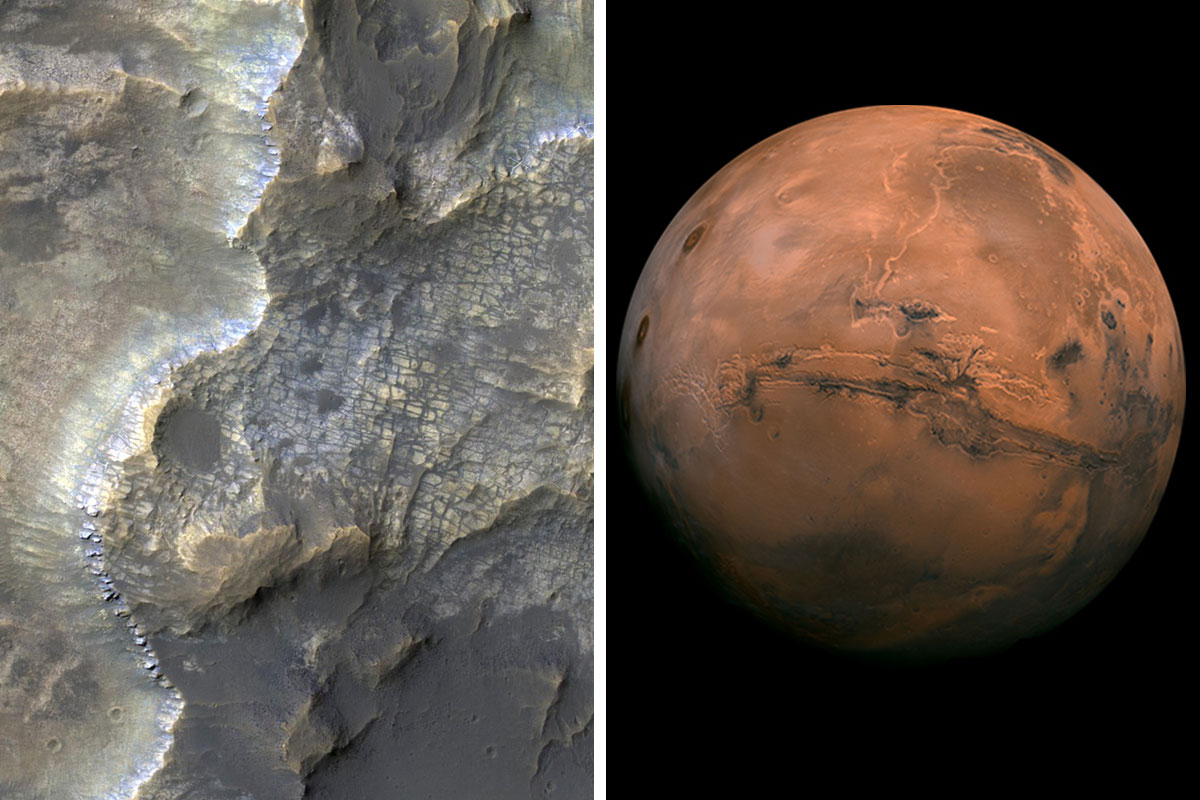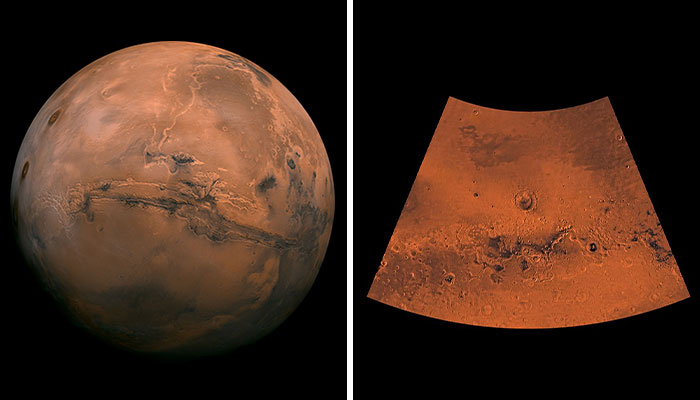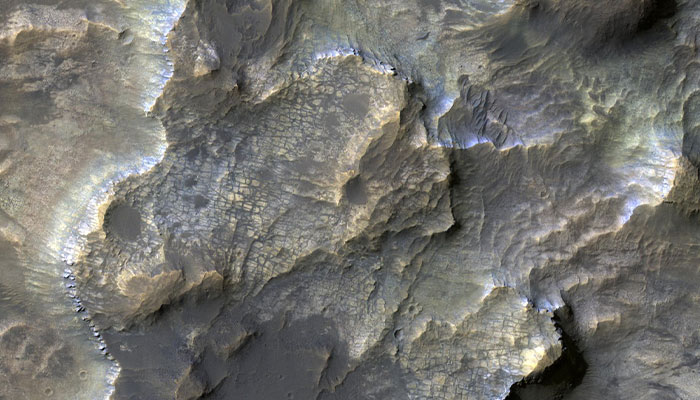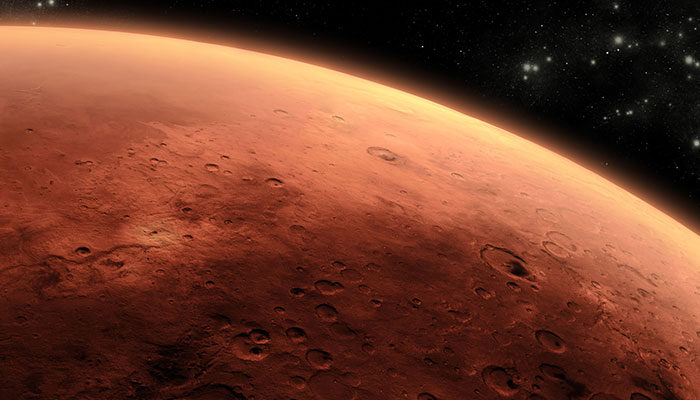
Recent Discoveries On Mars Could Take Scientists One Step Closer To Finding Signs Of Ancient Life On Mars
Beneath the rusty red surface of Mars lies a thrilling mystery that scientists have long tried to unravel: was there a time when life flourished on the lifeless (as far as we know) Red Planet many, many years ago?
Recent revelations suggest that scientists are getting closer to an answer.
New evidence about the geology of Mars has found that Earth’s neighboring planet has had more tectonic and volcanic activity than what scientists previously imagined. The discovery includes the finding of 63 types of volcanoes and an ancient lake that was about a mile deep. These findings are concentrated in the Eridania region of Mars, showing that this region is vastly different from the rest of the Martian highlands.
The revelations crack open a new Martian mystery, as it not only hints at a past on the planet where tectonic activity was teeming about 4 billion years ago, but it also helps researchers in the hunt for signs of ancient life on Mars.
In the last three decades, space agencies have confirmed the existence of past water on the Martian surface and have also found evidence to suggest that the Red Planet was once habitable. Now, the new evidence of intense tectonic and volcanic activity in the Eridania region, in some ways, points scientists in a direction to look for possible signs of ancient life.
The volcanic sources and the lake system, Eridania paleolake, suggest conditions that could have once been a cradle for extraterrestrial beings.
The Eridania region in the planet’s southern hemisphere is the site of early volcanic activity
Image credits: NASA Mars Exploration
“The large basins in this region once hosted a lake system known as the Eridania paleolake, which was up to around a mile deep when the lake was at its greatest extent,” Aster Cowart, team member and planetary geologist at the Planetary Science Institute, told Space.com. “Long-lived volcanic sources next to abundant water may have fueled hydrothermal systems that could have nurtured life.
“At the very least, these findings give us a larger number of places we can look for evidence of life,” Cowart added.
The Mars that we see today has little to no tectonic or volcanic activity. Moreover, when one looks at Mars, about half of its surface seems older than 3.5 billion years, which tells us that the planet hasn’t been renewing its outer layer much at all.
This is different from the Earth’s buzzing tectonic activity. On Earth, the crust renewal process takes place because of plate tectonics. This is where the Earth’s outer plates move, and sometimes, one plate will slide under another. This process consequently helps mix up the Earth’s outer layer with the material underneath, almost like recycling the Earth’s surface back into its deeper layers.
Hence, the new discoveries of the Eridania region shed light on a side of Mars that has not been seen before.
The Eridania region lies on the southern hemisphere of Mars. The researchers behind the new discovery collected data from spacecraft around the Red Planet, such as the Mars Global Surveyor, Odyssey, and the Reconnaissance Orbiter, to study the morphology and mineralogy of this region.
The scientists then found that the Eridania region was different from the rest of Mars in various ways. The area had a unique mix of elements that were different from other areas of Mars, and, additionally, the crust in the Eridania region was also found to be highly magnetic compared to other regions of the planet.
About half of Mars’ surface seems older than 3.5 billion years, which tells us that the planet hasn’t been renewing its outer layer much at all
Image credits: NASA
“Various attributes of the Eridania region have drawn special attention for a while,” Cowart explained. “Gamma-ray spectroscopy shows this to be a region of the crust with an especially distinctive composition, gravity data has shown it to be generally less dense and thicker than the rest of the Martian crust, and magnetic data shows it to be an intensely magnetized crust.”
The researchers also found 63 examples of volcanic activity across four different volcano types, which are volcanic domes, stratovolcanoes, pyroclastic shields, and caldera complexes.
The Eridania region could hold possibly hundreds of other examples of volcanic activity, and evidence of this would be based on the remnants of intense geologic activity that took place on Mars around 3.5 billion years back, the scientists believe. It may also be possible that the diverse range of volcanic activity observed in the Eridania region could be found in other areas as well, they added.
The geological activity observed on Mars involves the land moving upwards, which leads to some areas rising and others sinking. This kind of movement is an early form of what we see as plate tectonics on Earth today.
The new discoveries from the Martian landscape provide an opportunity to investigate planetary landscape evolution and the origin of life on Earth as well
Image credits: NASA Mars Exploration
Before Earth had plate tectonics, it was hard to mix the outer layer of the Earth (the crust) back into the deeper, molten layer (the mantle). But over time, water started to get into the deeper parts of the crust and caused the minerals in the crust to change.
“Prior to the development of plate tectonics, it was difficult to recycle crust back into the mantle because the crust’s composition was more uniform, the crust was more rigid, and it was buoyant relative to the mantle,” Cowart said about our planet. “However, the slow incorporation of water in the deeper levels of the crust began to cause mineral transformations that made the deep crust denser.”
As the Earth’s lower crust changed, it started to sink down into the deeper, molten layer of the Earth, a process called ‘sagduction.’ This sinking pushed down water-rich minerals into the crust and led to the creation of light, floaty magma that caused some parts of the Earth’s crust to lift up.
The result was a landscape with big, low areas or basins where the crust was sinking and high areas or mountain chains where the crust was moving upwards.
“This is exactly what we see in the Eridania region,” Cowart said. “It is really exciting to see a landscape so heavily shaped by pre-plate tectonic processes. A lot of what we know about these processes on Earth are either pieced together from heavily eroded ancient rocks that have some degree of overprinting from later plate tectonic activity or from where they occur in modern settings and are influenced by plate tectonic dynamics.”
Thus, since Mars possesses geological features reminiscent of early Earth, the Red Planet now presents a chance to explore a chapter of Earth’s history that our own planet’s geological records don’t reveal. It could also shed light on the origins of life on Earth.
“It’s just astonishing to think about the scale of activity in this region. Mars has a tendency to do everything in a big way, and seeing a landscape nearly the size of Europe or Arabia shaped by an interrelated set of tectonic processes in this amount of detail is amazing,” Cowart concluded. “Seeing a Martian landscape shaped by these processes and preserved in stasis provides us with a great opportunity to investigate planetary landscape evolution in more detail.”
As the new evidence cranks up the search for extraterrestrial beings, Netizens joked about whether life on Mars moved out because of us, the noisy neighbors

















47
2